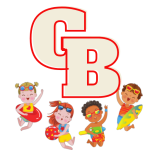

In a world brimming with diverse abilities and unique experiences, the realm of art serves as a universal language that transcends barriers, connecting us in ways words often cannot. Among the myriad forms of artistic expression, coloring pages emerge as a simple yet profoundly inclusive activity, inviting individuals of all ages and abilities to explore their creativity. This blog delves into the significance of art for accessibility, highlighting the importance of teenage coloring pages, print color pages, and coloring pages for free as tools for inclusivity, self-expression, and therapeutic benefit.
Coloring isn't just a pastime for the young but a therapeutic activity that benefits teenagers and adults alike. It's a form of art therapy, providing an outlet for stress relief, mindfulness, and emotional expression. The act of choosing colors, following patterns, and creating something beautiful can be profoundly calming and satisfying. For individuals with diverse abilities, coloring offers an accessible way to engage with art, enhancing fine motor skills, visual coordination, and concentration.
As children grow into teenagers, their interests evolve, and so does their approach to coloring. Teenage coloring pages are designed to cater to this transition, offering more complex and engaging designs that challenge and inspire. These pages often feature themes and subjects relevant to adolescent interests, such as abstract patterns, pop culture references, and nature scenes. By integrating teenage coloring pages into art accessibility initiatives, we provide an age-appropriate outlet for creative expression that resonates with this demographic's evolving identity and interests.
The availability of print color pages has made it incredibly easy for individuals to access art activities from the comfort of their homes. With just a printer and some basic art supplies, families, educators, and caregivers can provide a ready source of artistic engagement. This accessibility is particularly beneficial for those who may have mobility challenges or live in areas with limited access to art resources. Print color pages also offer the flexibility to choose from an endless variety of themes and difficulty levels, catering to the unique preferences and abilities of each individual.
One of the most significant advancements in the accessibility of art activities is the proliferation of coloring pages for free available online. These resources democratize access to art, ensuring that cost does not become a barrier to creativity. Websites and apps dedicated to free coloring pages provide an extensive library of options, from simple designs for beginners to intricate patterns for more advanced artists. This open access encourages exploration and experimentation, allowing individuals to discover their artistic preferences and develop their skills at their own pace.
Beyond the joy and satisfaction of creating art, coloring offers several therapeutic benefits, making it a valuable tool for individuals with diverse abilities. Engaging in coloring activities can help reduce anxiety and stress, improve focus and concentration, and even enhance hand-eye coordination and fine motor skills. For those with developmental disabilities, coloring can serve as a form of non-verbal communication, enabling them to express their feelings and experiences through color and design.
Incorporating coloring pages into educational and therapeutic settings can also foster an environment of inclusion and understanding. By providing a shared activity that is accessible to everyone, regardless of ability, coloring can help bridge gaps between individuals, promoting empathy, cooperation, and social interaction. Teachers and therapists can use coloring pages as a tool to discuss diversity, celebrate differences, and encourage a more inclusive perspective among peers.
See more The Colorful Mingle: Pages Promoting Social and Artistic Interaction
To further enhance the accessibility of coloring pages, it's important to consider customization options that cater to diverse needs. For instance, creating coloring pages with larger spaces and bold outlines can make the activity more accessible to individuals with visual impairments or fine motor challenges. Similarly, incorporating tactile elements, such as raised lines or textured paper, can provide a multisensory coloring experience for those who benefit from sensory input.
See more at: https://hirakbook.com/post/1730_coloring-pages-exploring-the-spectrum-of-creativity-welcome-to-the-vibrant-world.html
Art for accessibility is not just a concept but a movement towards creating a more inclusive world where everyone has the opportunity to express themselves creatively. Coloring pages, especially teenage coloring pages, print color pages, and coloring pages for free, play a crucial role in this movement, offering a bridge across diverse abilities and ages. By recognizing and embracing the power of coloring as a tool for inclusivity, self-expression, and therapeutic benefit, we can foster a more understanding, empathetic, and colorful world.
The beauty of coloring lies not just in the artwork produced but in the process itself—a journey of exploration, relaxation, and self-discovery. As we continue to advocate for and implement art for accessibility, let us remember the importance of providing diverse, engaging, and accessible coloring resources that welcome everyone to the world of art, regardless of their abilities. Let's color our world with the hues of inclusivity, understanding, and boundless creativity.